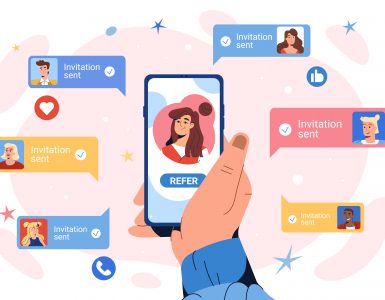Have you formalized your onboarding process yet? If not, it may be time to change that. According to a recent Glassdoor survey, organizations that embrace a formal employee onboarding process may see up to 82 percent improvement in new hire retention and a productivity boost of up to 70 percent. If you like those numbers, you owe it to yourself to implement a proper onboarding program.
What Is Employee Onboarding?
While the process starts long before their first day on the job, onboarding is designed to offer learning and training to anyone who joins your company. If done well, you can expect to keep good employees due to an improved satisfaction rate and better communication between teams.
What Are The Benefits Of Onboarding?
There are many perks to doing your research and implementing an effective onboarding plan for your hiring teams and management. Those perks include:
- A shortened learning curve, with an increase in productivity
- Improved industry and legal compliance that aligns with your organization’s goals
- Better communication at all organizational levels
- Improved job satisfaction and employee retention
- Improved performance
- Commitment to organizational goals
- Money saved on recruiting, hiring, and training
- More trust between employees and leadership
- Better job candidates
If your company sees just one of these improvements, the onboarding process will be worth it.
What Is The Employee Onboarding Process?
The onboarding process is lengthy and lasts at least one year. In that time, you’ll go through several phases, starting with your recruiting strategy. Here are the steps for onboarding:
During The Hiring Process
The best way to approach onboarding is by being proactive, which means including recruiting and hiring in your overall process. This way, potential employees become aware of your company culture from your very first interaction and understand what it means to work for you. They’ll also have a better idea of what the job entails, the company culture, and the type of customer you serve. Plus, by giving an accurate description of their job, or what a “day in the life” is like, you can help them decide if the job is for them.
Other crucial onboarding steps include:
- A clear job description that includes specific responsibilities
- What to expect in each stage of the hiring process, including how long between stages
- Frequent communication after each stage in the process
- Thoughtful interviews that show value for each candidate
- Informed background checks and pre-employment testing procedures, where the candidate can ask questions, if necessary
- Personal, over-the-phone job offers—followed by a letter
- A flexible start date
Proactive hiring teams that use an applicant tracking system (ATS) will find it beneficial to transfer candidate profile information over to the employee database. This gives all applicable team members a way to access important details about your new employee.
1-2 Weeks Before Your New Employee’s First Day
Your candidate has accepted the offer, and this is actually where some of the most important steps occur. Those steps include:
- Gather your new hire paperwork, making sure it’s updated and includes all of the essential forms, such as employment agreements, non-disclosure agreements, wage and tax withholding forms, and the employee handbook.
- Set up all online accounts and access for company intranet systems, such as email, chat applications, payroll software, and project management access.
- Get all hardware needs sorted, such as the company computer, phone, and accessories. This is also a good time to confirm your new employee’s phone number or extension and include it in the directory for other employees to reference.
- Update security procedures and sort out your employee’s building and parking access.
- Order business cards and nameplate, as well as stock common office supplies.
- Schedule the meetings for team member meet-and-greets, including getting-to-know-you lunches, coffees with management, and any applicable first-day meetings.
- Send a welcome email with the details on their first day and invite them to ask any questions they may have.
The Day Before Your New Hire’s First Day
It’s almost time for your new employee to start. Don’t wait until the day to tackle these important tasks:
- Clean their desk and double-check that their equipment (as well as email) is working.
- Assemble a welcome kit with a letter or card signed by their team, important documents, company swag, an office map, company organizational chart, their schedule, and employee handbook.
- Send out a reminder email to applicable teams.
On Your New Employee’s First Day
This is the moment you’ve been waiting for. While you should be flexible in your expectations and understand that the new hire may have questions and need time to get acclimated, these are the minimum things to do on day one.
- Focus on the company’s goals, expectations, and why they were hired, rather than training at this point.
- Provide them with a schedule of the day and first week, as well as goals for the first year.
- Assign them a mentor who can help answer questions and ease those first-day jitters.
- Give them a full office tour, paying close attention to those areas they will frequent.
- Handle the new hire paperwork.
- Offer some flexible downtime to take a break, get to know their desk and equipment, and log into accounts (troubleshooting, if needed).
- Get the formal HR onboarding meeting out of the way, including benefits and policies.
During Your New Employee’s First Week
After your employee has had a day to acclimate, you can move on to these tasks that focus on their identity within the organization. Stay away from attempts to “mold” the employee per the values and goals of the organization, Instead, emphasize how their unique skills and experiences fit naturally into the overall mission of the company.
- Schedule one-on-one management meetings.
- Go over a three-month roadmap for your employee with the key projects they will encounter; repeat for six months.
- Give feedback as soon as possible on opportunities for the employee to adapt,
- Assign them their first job-specific task, and check in on them regularly.
During Your New Employee’s First Three Months
Continue with the onboarding process through the next quarter:
- Have regularly-scheduled one-on-one meetings with management.
- Continue to check in after 30 days, and again at 90 days, to address any concerns.
- At each meeting, actively solicit feedback on how the job is going overall, as well as ask for onboarding specific comments.
FAQs
These are the most commonly asked questions regarding employee onboarding processes:
What Is The Average Cost Of Onboarding A New Employee?
According to the SHRM experts, the average cost-per-hire is $4,125 and includes training, supplies, equipment, management, and payroll.
How Long Is The Onboarding Process?
While there are huge benefits for companies that can extend their onboarding from the recruitment stage to at least one year after hiring, most professionals see positive outcomes from doing it for at least the first three months. Since it’s common for employees to leave just six months into a job, there’s an opportunity to keep investing in your employees for their entire first year.
What’s The Difference Between Orientation And Onboarding?
While the terms onboarding and orientation are sometimes used interchangeably, they are not the same thing. Onboarding is the process of helping a new hire integrate into the company culture. Orientation, on the other hand, is a process that introduces a new hire to their specific job.
When Should Onboarding For A New Employee Begin?
In order to give you the biggest advantage, onboarding should start from the moment you start recruiting. Your first interactions with candidates should be done with solid onboarding procedures in mind. By introducing them to the culture and getting their buy-in early, you have a better chance of seeing them invested in the long-term.
Curious how Comeet can play a role in onboarding? In addition to easing the transition from candidate to employee, our ATS offers insights into how to bring on the best talent from day one. Learn more here.





























